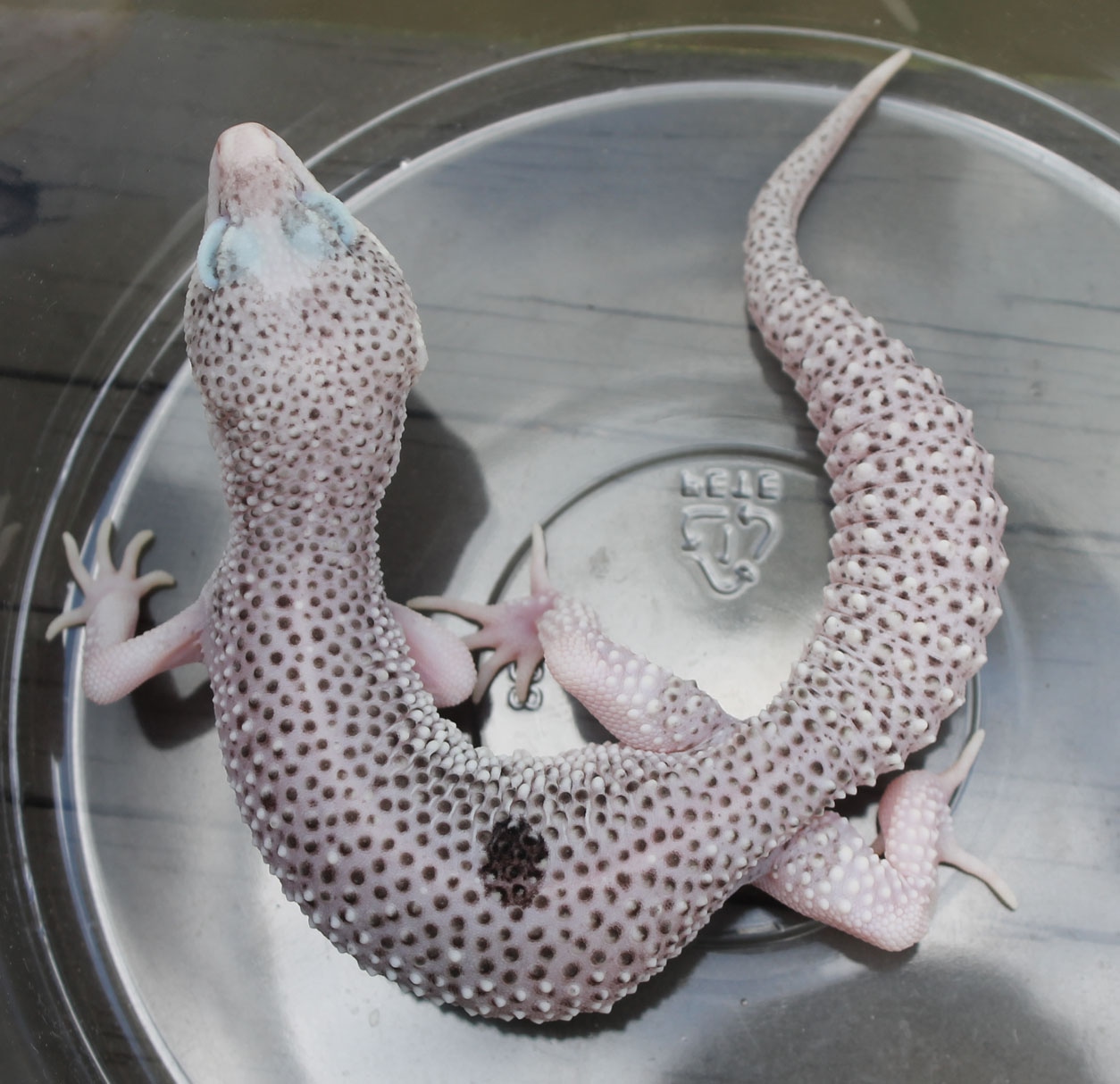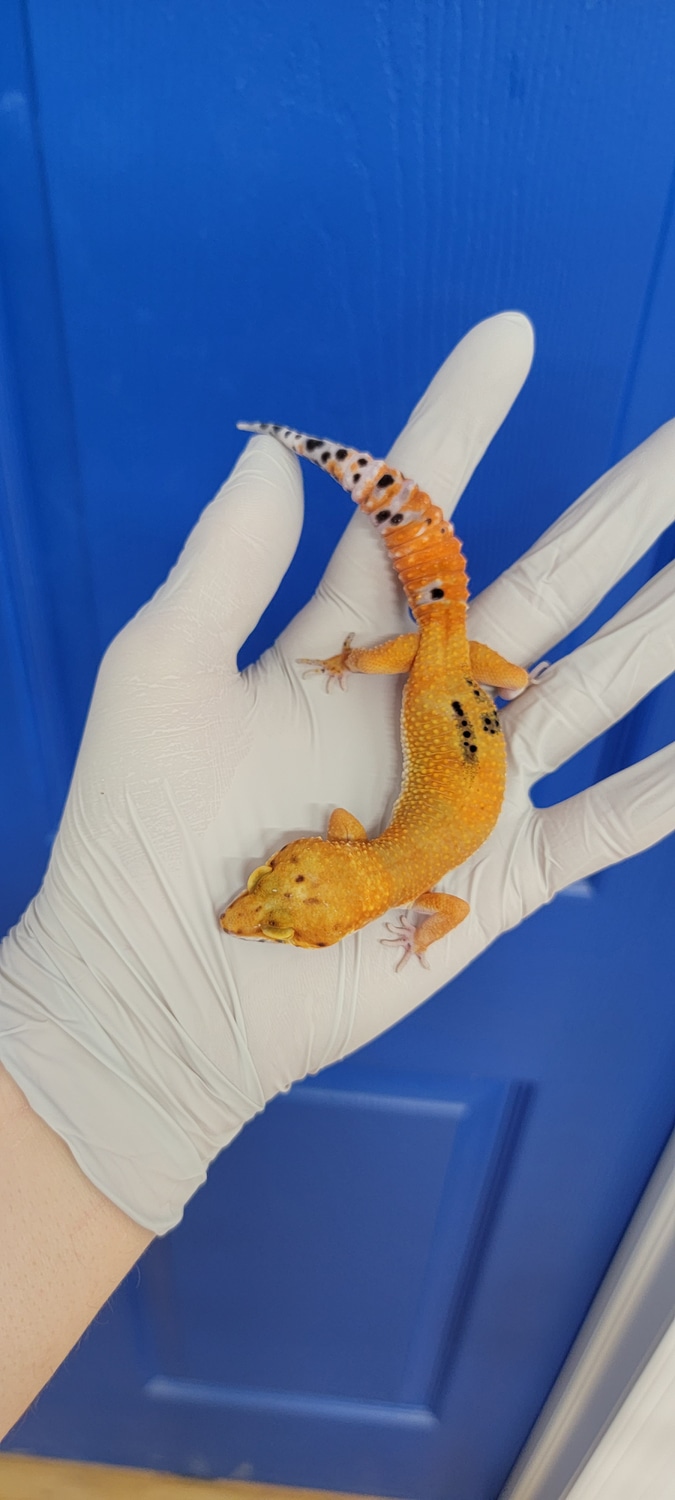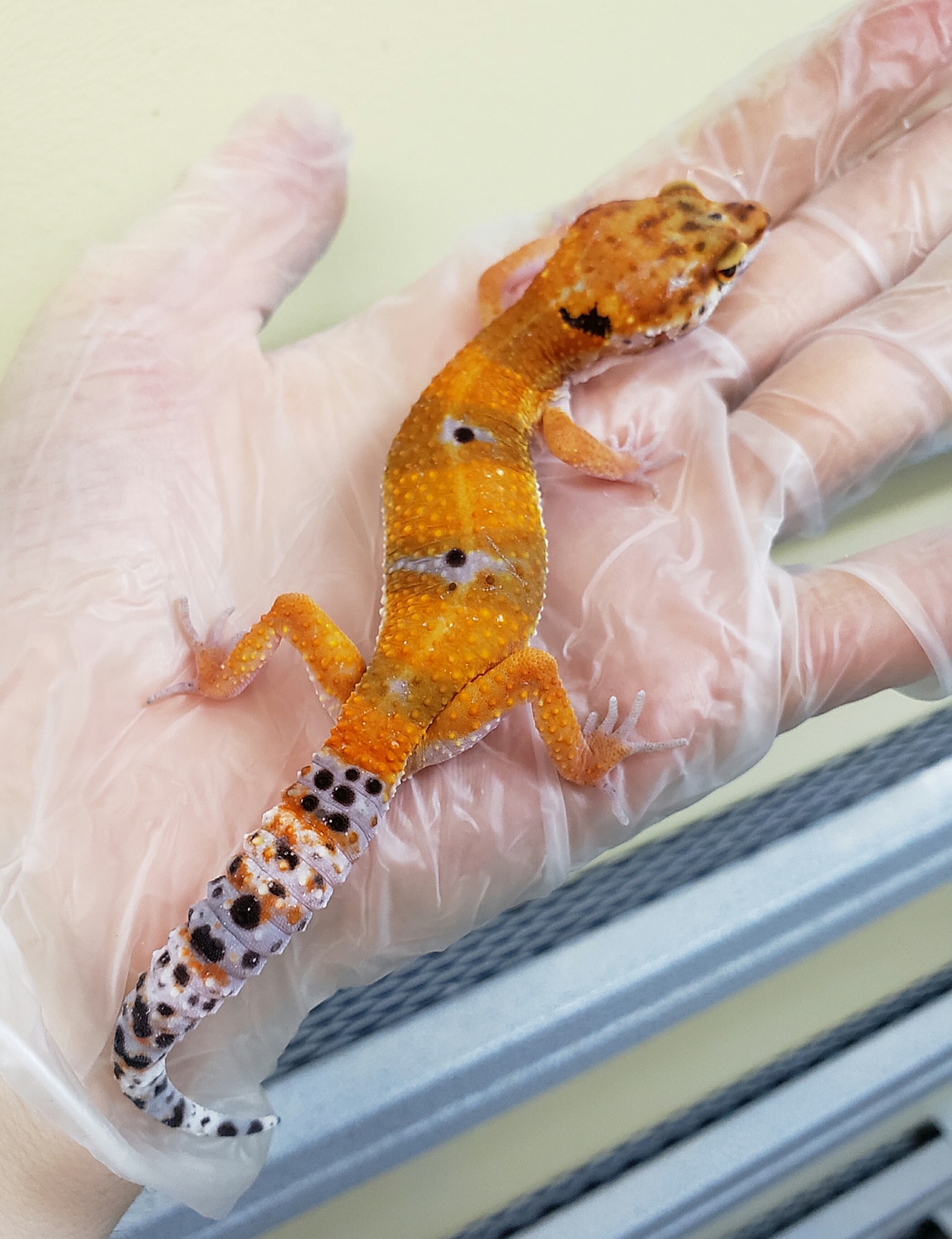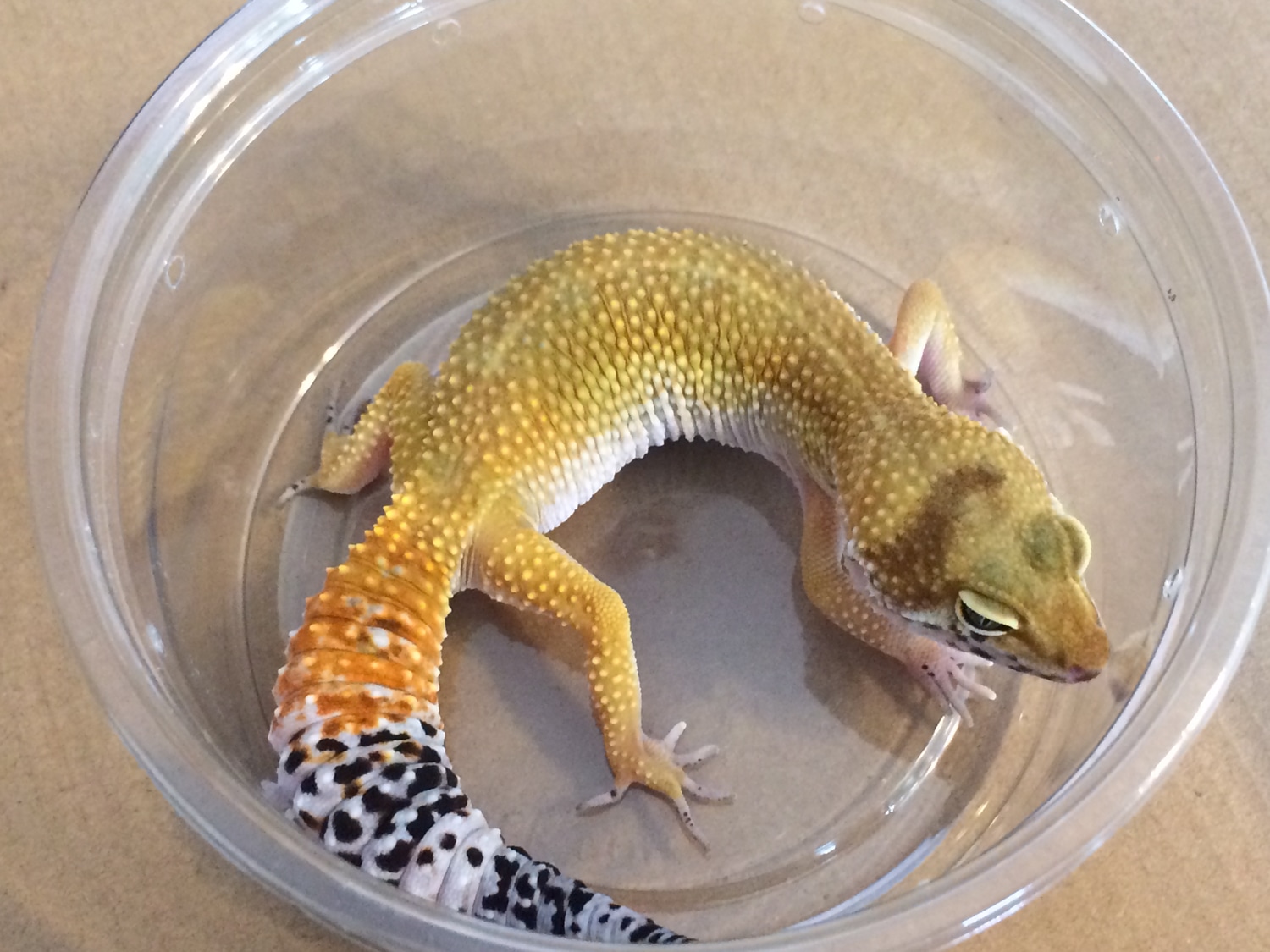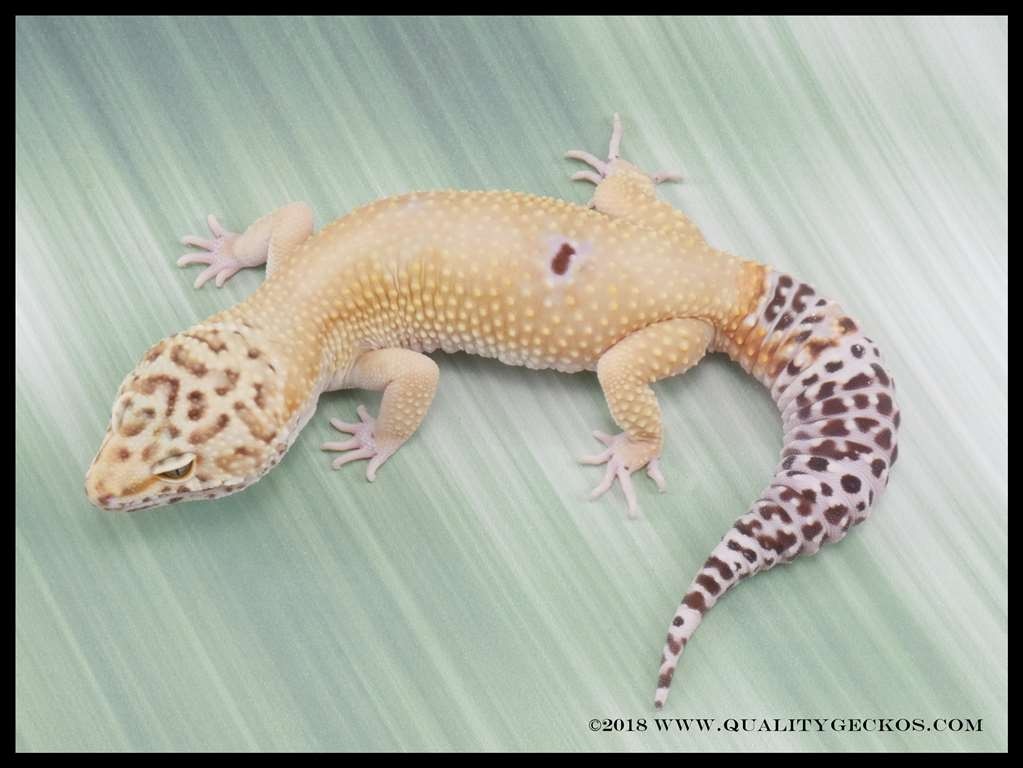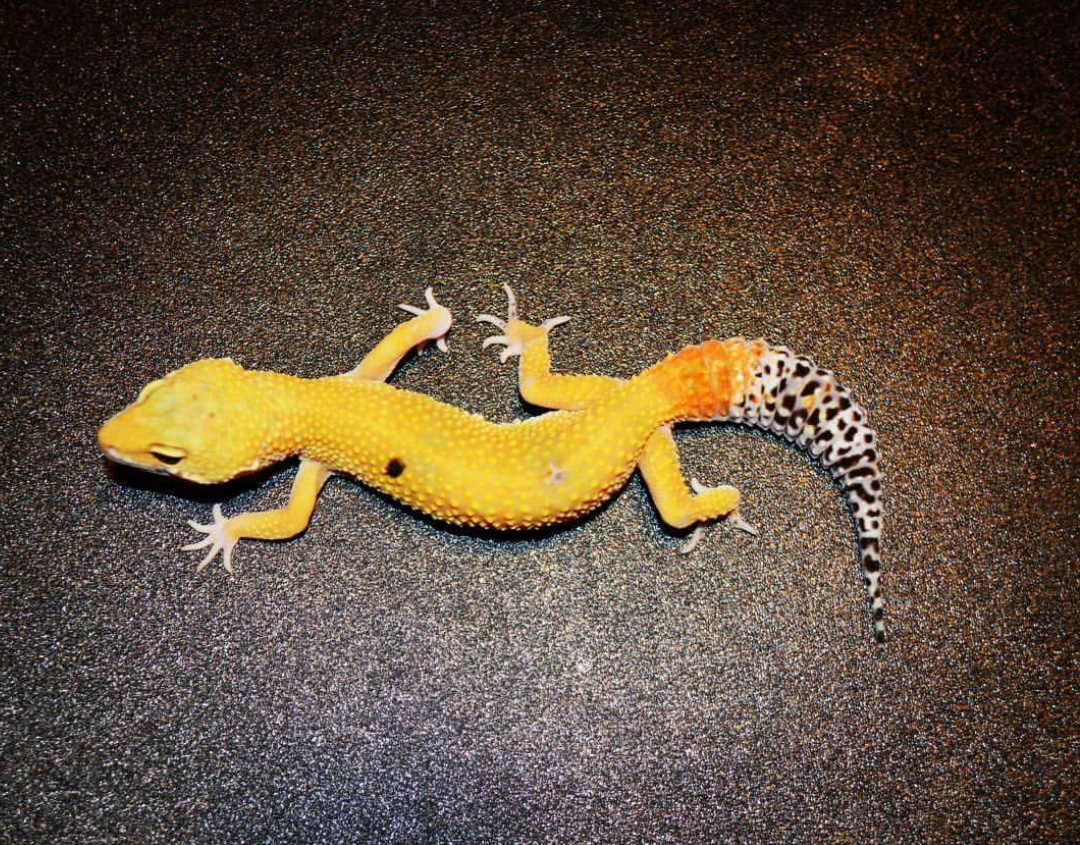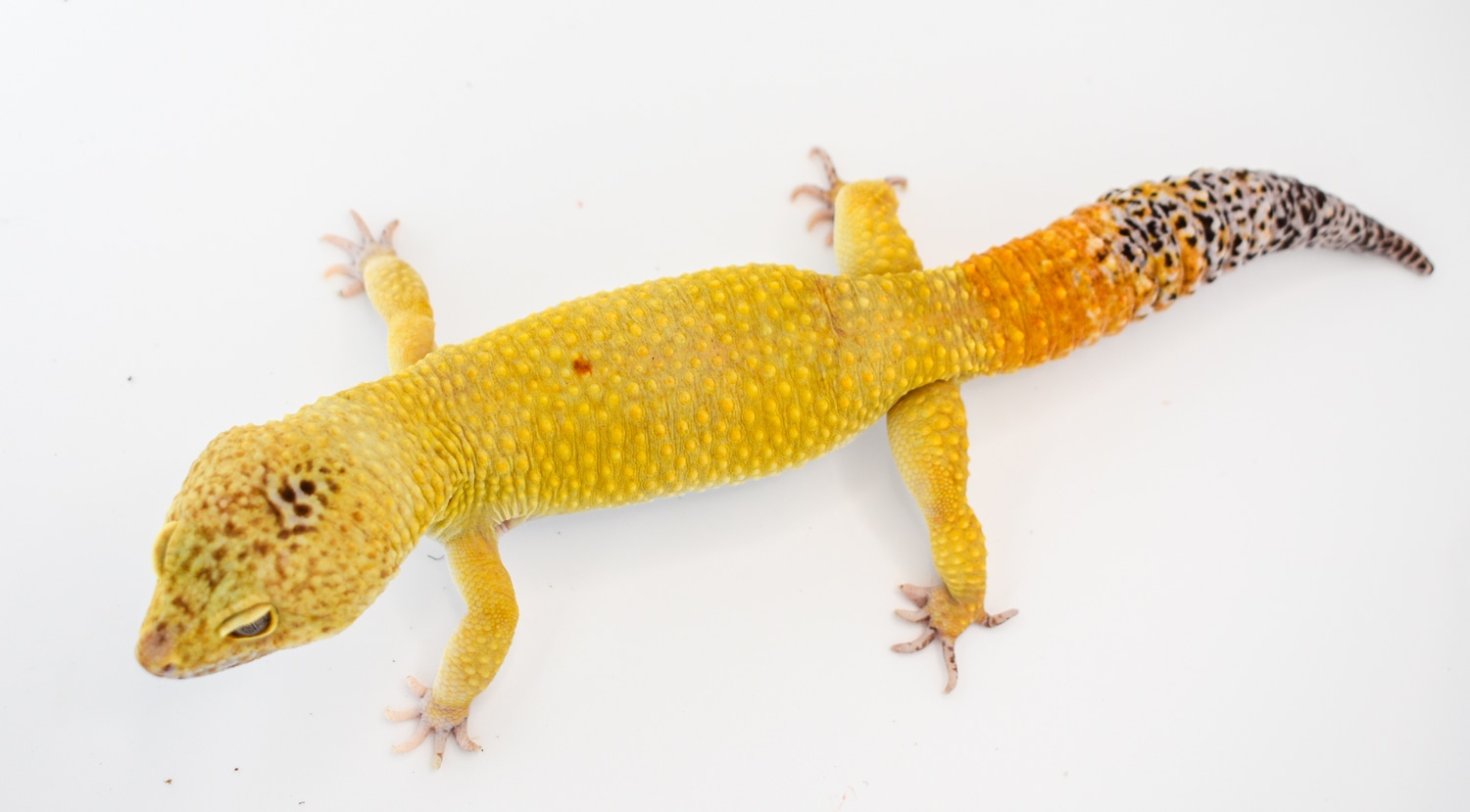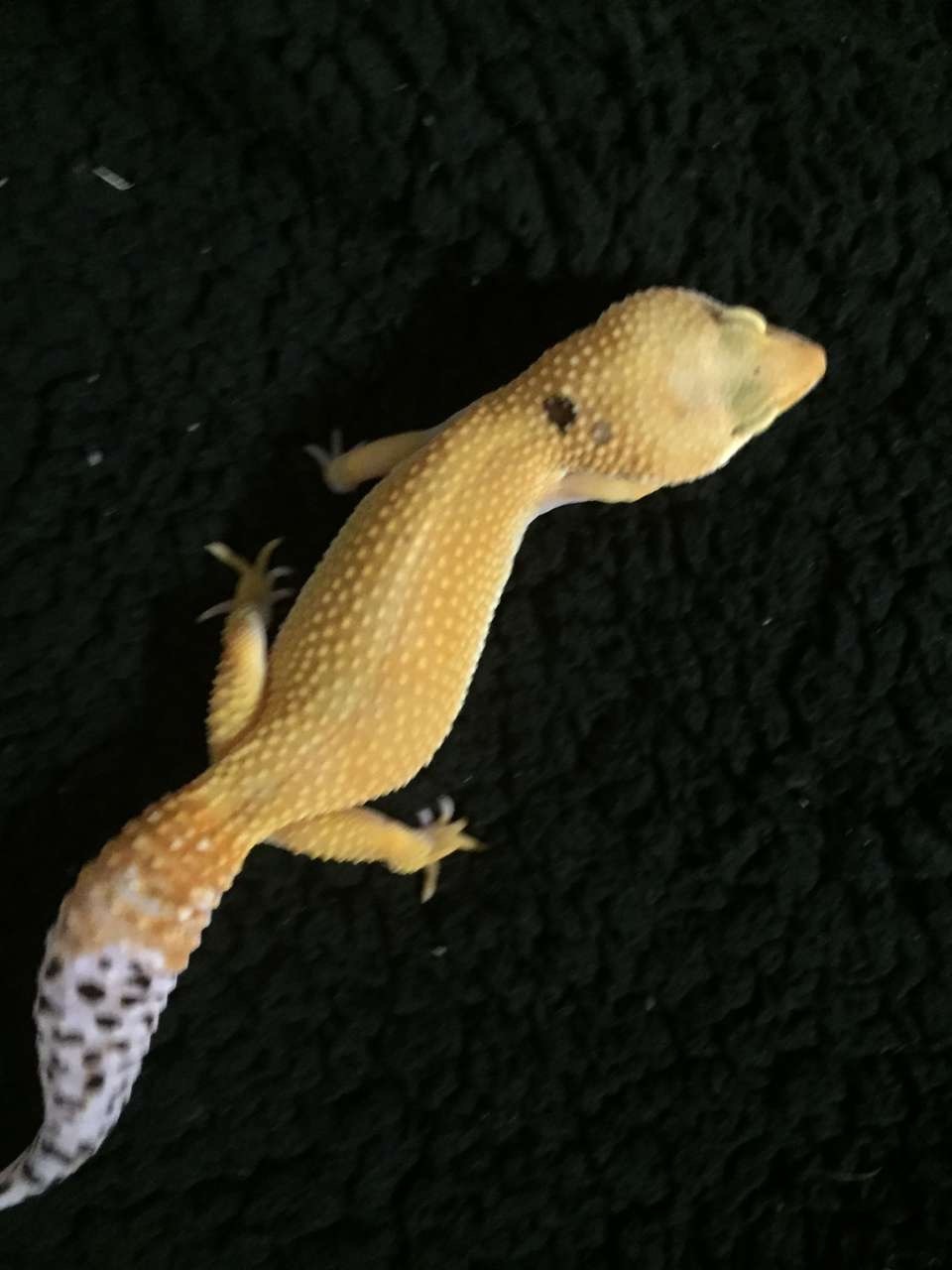Paradox
Type: Other
Aliases: Chimeras, Mosaics
Issues: N/A
First Produced In: Unknown
Availability: Rarest
Last Updated: 2022-02-08
Do you have any suggestions or corrections for this article?
Click here to contribute feedback
About
A Paradox is a random occurrence of something that shouldn’t happen on a Leo. For example, All albino leopard geckos are amelanistic (cant produce black pigment), so an albino with a black spot on would be a paradox. Or a Patternless leopard gecko with some spots.
Also, animals with unusual black or red markings are named as paradox. Those spots can occur everywhere on the body, for example on legs & belly.
A Paradox Leopard Gecko is a Leopard Gecko that expresses contradictory features or qualities. The term “Paradox” is an loose term used in the reptile industry/hobby that has no scientific/genetic value. It simply describes an anomalous phenotype, anywhere from a small, nearly undetectable colour/pattern difference all the way up to extreme 50/50 animals.
The two most common forms of “paradox” that we encounter in the hobby are Mosaics and Chimeras
A mosaic is an animal that has genetically distinct cell lines but they originated from a single zygote.
A chimera is an animal that has genetically distinct cell lines but they originated from more than one zygote/individual
Mosaic example:
You breed an Albino to a Normal/Wild Type and what you hatch are het Albinos. But one of them has random full Albino patches on it. This happens because of a few reasons, one of which being the wild-type allele of the gene is lost in a subset of the cells in this animal’s body. So the animal then has two genetically different sets of cells in its body - 2n and 2n-1 - but all of the cells in its body have the same embryo as their origin. This type of “paradox” animal is a mosaic
Chimera example:
You breed a Pinstripe to a Normal/Wild Type and what you hatch are Pinstripes and Normals, but one of the Pinstripes has random Normal patches on it. This happens because, most often, two different fertilized ova fuse to create a single embryo. This gives you an animal with two genetically different sets of cells in its body - 2nw and 2np - that each had an independent origin. This type of “paradox” animal is a chimera.
Bilateral animals are almost assuredly simple mosaics. The first division of the fertilized embryo sets up the left/right asymmetry, so if the chromosomal non-disjunction event happens there then every cell on one side of the animal will lack one of the alleles while every cell on the other side of the body will have both of the alleles. - Travis Wyman
History
No history yet.
Appearance
Head
The head of a Paradox Leopard Gecko can be completely random, ranging from the expression of a individual traits phenotype, up to a complete 50/50 split down the centre. Eye colour is something that can be altered also, with some showing different colouration per eye.
Body
The body of a Paradox Leopard Gecko can be completely random and can range from a slight, almost unnoticeable, smudge all the way up to covering the entire length of their bodies.
Belly
The belly of a Paradox Leopard Gecko can be completely random, though it is less often noticeably affected than the other areas on a Leopard Gecko.
Tail
The tail of a Paradox Leopard Gecko can be completely random.
Proven Lines
No known proven lines
Related Traits
No known related traits
